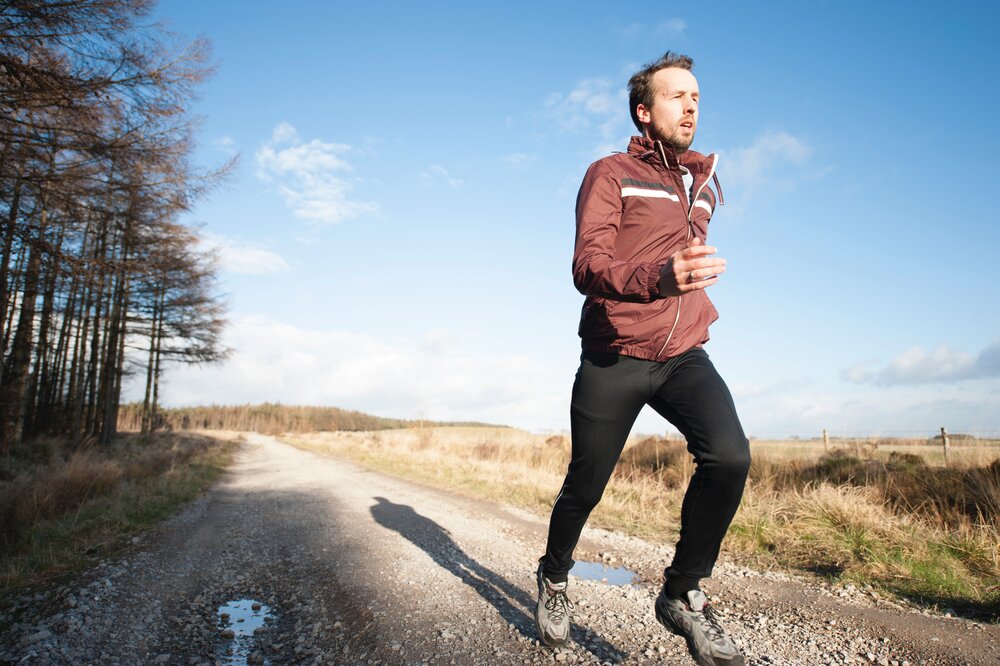Despite our best efforts to stay positive and motivated, it can often seem like winter and working out just don’t go hand in hand.
If you are someone who regularly trains, but is struggling with the cooler months, then you can easily find your training regime derailed.
If you are new to exercise, then winter can also seem like a daunting time to begin training.
Though training in winter can be more challenging than training in summer, there are a few things you can do to motivate yourself, prevent injury and allow you to get the most out of your workout.
Nelsons® arnicare® caught up with certified PT, Paul Byrne, who has shared his top tips on how to get yourself ready for a winter workout.
Keep warm and carry on
Before beginning something, you will make adjustments in order to feel comfortable so that you can successfully accomplish what you have set out to achieve. The same concept can be applied to exercising.
Feeling comfortable will leave your muscles in a more elastic state, making it easier to complete harder or new exercises, or to train in a harsher environment. During a workout your breathing, heart rate, blood flow, energy release and muscle usage will increase.
As these adjustments don’t happen automatically, the purpose of a warmup is to encourage them to occur gradually so that you don’t start your workout at a strenuous level. By doing so, you will improve performance and reduce the risk of injury or fatigue.
Take your time
Though you might want to head straight into the cold to get your winter workout over and done with, it is probably better for you to take your time and warm up inside. The main objective is to elevate your core temperature, which can be more difficult in cold weather as your muscles and joints will tighten due to heat loss and muscle contraction. Regardless of temperature you should always begin with a low intensity aerobic activity such as a short jog, or a combination of exercises such as jumping jacks and bodyweight squats.
Cool down – but don’t freeze
At the end of your workout, you should spend a few minutes (at the very least) cooling down by slowing the level of activity gradually. By doing so, your heart rate and breathing will return to a resting state and you will reduce the risk of feeling faint or dizzy (which can occur if you suddenly stop your workout, causing blood to pool in large muscles). A proper cool-down will also initiate your muscles’ repairing process and help prevent DOMS (Delayed Onset Muscle Soreness), which usually occur after unaccustomed or strenuous exercise.
Layers – quality over quantity
Though you should make sure you wear enough clothing when training outside, you should also strive to feel comfortable and not to overdress, as you might overheat. Avoid wearing too many layers as it might constrict your movement. Instead, opt for a higher quality thermal and an exercise jacket.
Hat or no hat? Contrary to popular belief, heat loss through your head is no greater than from other areas of your body. If you feel particularly cold, a hat or gloves might be a good option, however, as long as your body is covered, this isn’t necessary.
Be prepared
Though a proper warm-up and cool-down can help prevent injury and DOMS, cold weather can contribute to additional tightness and soreness the next day. Treating yourself to a warm bubble bath in the evening can help relax. If you notice any bruises, have some Nelsons® arnicare® at hand, used within the homeopathic tradition for the symptomatic relief of sprains, muscular aches and bruising or swelling after contusions.
The early bird catches the worm
Winter’s dark mornings and dark nights can often be enough to put anyone off from training. If you are feeling this way, try looking ahead. In a few months, days will start getting longer and more and more people will be out exercising. Get ahead of them; set goals and prepare for summer.
Early morning exercising wakes the body up, making you feel more motivated, less drained, down or fatigued. Though the idea of waking up a little earlier might be awful, once you are up and have done your workout you will not only feel great, but you can also come home after work and simply relax.
